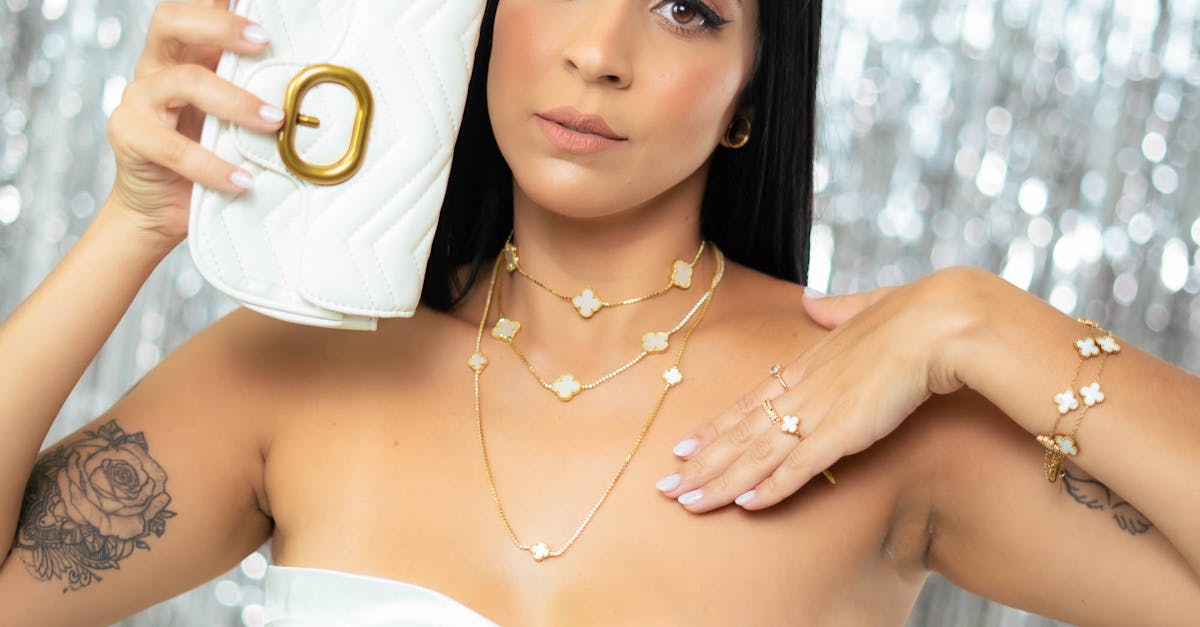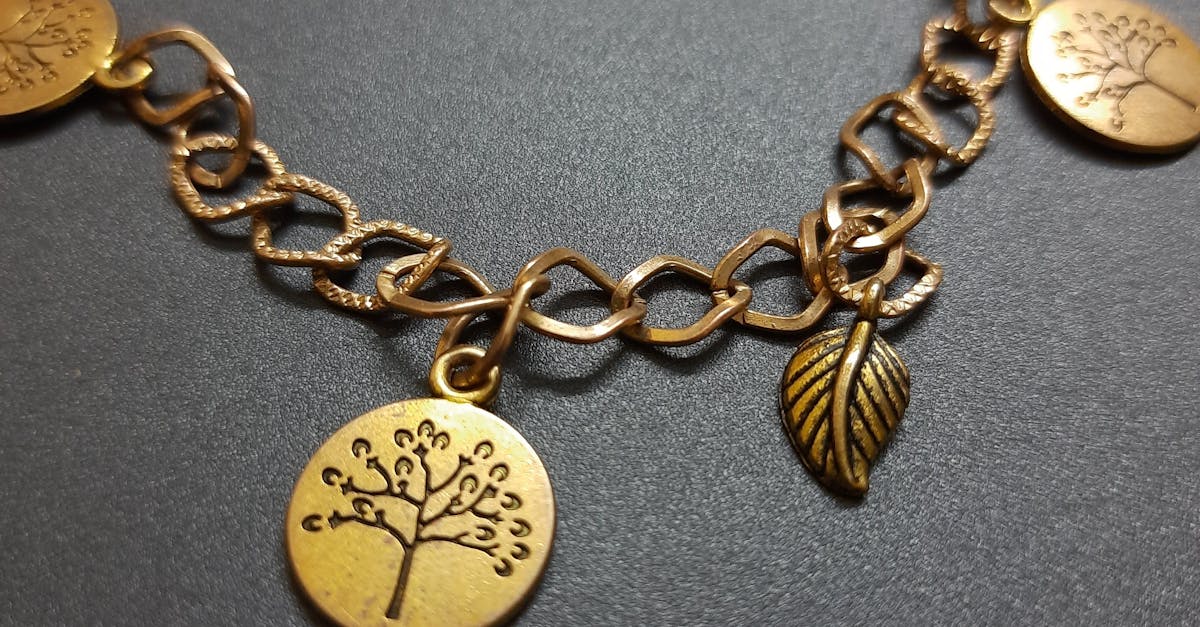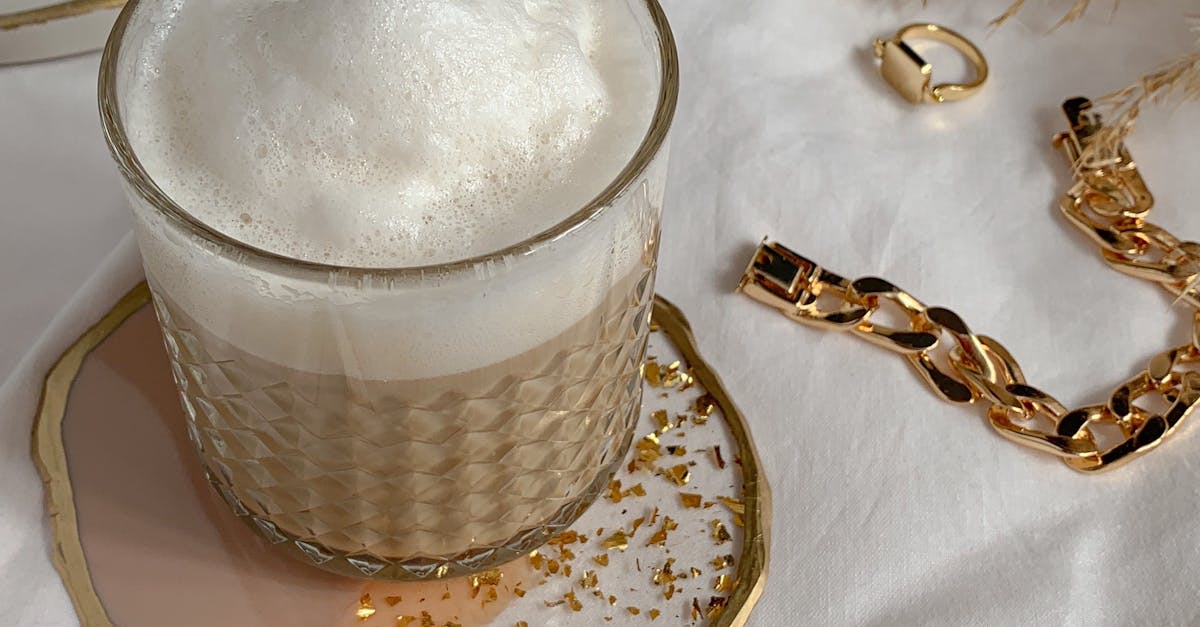Navigating the Allure and Value of Gold Adornments

Shining Investment: A Comprehensive Guide to the World of Gold Jewelry
Throughout history, gold has captivated civilizations, adorning their bodies and serving as a symbol of wealth and opulence. Today, gold jewelry remains a timeless treasure, not only for its beauty but also for its intrinsic value. This comprehensive guide will delve into the world of gold jewelry, deciphering the secrets behind its enduring allure and empowering you with the knowledge to make informed purchases. We’ll unravel the mysteries of karatage, explore the spectrum of gold colors, and provide invaluable tips for maximizing your gold jewelry investments.
From the purest 24K gold to the versatile 14K option, each karatage offers a unique combination of purity and durability. We’ll decode the karatage system, helping you determine the gold content and value of your precious pieces. Furthermore, we’ll embark on a journey through the enchanting world of gold colors, discovering the processes that transform gold into its captivating shades of white, yellow, and rose. Understanding these variations will enable you to make informed choices that align with your personal style and preferences.
Key Insights
- Gold jewelry holds both intrinsic value as a precious metal and sentimental value as a cherished adornment.
- Karatage measures the purity of gold and is a key factor in determining its value and durability.
- Different colors of gold (yellow, white, and rose) are achieved through alloying with other metals, offering a range of aesthetic options.
- Investing in gold jewelry can be a smart financial move, but it’s crucial to choose reputable sellers and consider factors like karatage and design.
- Understanding the basics of gold jewelry, including its different types, value factors, and investment potential, empowers you to make informed decisions when buying or investing in gold.
1. Gold – A Timeless Allure
Gold – A Timeless Allure: Understanding the enduring appeal of gold jewelry and its role as a valuable asset
Gold has captivated civilizations for millennia, transcending time and cultures as a symbol of wealth, power, and beauty. Its inherent allure lies in its unique properties – it is malleable, allowing for intricate designs, yet durable enough to withstand the test of time. Unlike other metals, gold does not tarnish or corrode, ensuring that its brilliance endures for generations.
Beyond its aesthetic appeal, gold holds intrinsic value as a precious metal. Its rarity and limited supply make it a desirable investment, maintaining its worth even during economic fluctuations. Unlike paper currency or stocks, gold cannot be inflated or devalued by governments or institutions. This makes it a reliable store of value, especially in times of uncertainty.
The versatility of gold adds to its timeless appeal. It can be crafted into a wide array of jewelry designs, from delicate chains to elaborate necklaces, earrings, and rings. Gold’s natural warmth and luster complement any skin tone, making it a flattering choice for all. Whether worn as a statement piece or a cherished heirloom, gold jewelry holds both sentimental and financial value, making it a worthwhile investment for any jewelry enthusiast or savvy investor.
2. Karatage: Unraveling the Purity Puzzle

Karatage: Unraveling the Purity Puzzle: Deciphering the karatage system to determine the gold content and value of your jewelry.
When it comes to gold jewelry, understanding karatage is crucial for determining its purity and value. Karatage measures the proportion of pure gold in an alloy, expressed in 24 parts. Pure gold, also known as 24K gold, contains 100% gold without any other metals mixed in. However, for practical purposes, pure gold is too soft for everyday wear, which is why it is often alloyed with other metals like silver, copper, or zinc to enhance its durability.
The karatage system provides a clear indication of the gold content in a piece of jewelry. For example, 18K gold contains 18 parts gold out of 24, which translates to 75% pure gold. Similarly, 14K gold contains 58.3% pure gold, while 10K gold contains 41.7% pure gold. The higher the karatage, the higher the percentage of pure gold and, consequently, the more valuable the piece.
Understanding karatage is essential for making informed decisions when purchasing gold jewelry. By knowing the karatage, you can determine the purity and value of the piece, ensuring that you are getting a fair price for your investment. Moreover, knowing the karatage can help you estimate the durability and longevity of the jewelry, as lower karatage gold is more durable due to the presence of other metals.
24K Gold: The Epitome of Purity
24K Gold: The Epitome of Purity: Exploring the highest purity gold available and its exceptional value.
In the realm of gold jewelry, 24K gold stands alone as the pinnacle of purity. With a composition of 99.9% pure gold, it embodies the essence of this precious metal. Its unparalleled purity gives it a rich, deep color and a captivating luster that sets it apart from lower karat gold alloys.
Due to its exceptional purity, 24K gold is incredibly soft and malleable, making it ideal for intricate and delicate jewelry designs. However, its softness also limits its durability for everyday wear. 24K gold is often used in special occasion jewelry, such as wedding bands, commemorative coins, and heirloom pieces that are meant to be treasured and passed down through generations.
While the allure of 24K gold lies in its purity, it comes at a premium. Its high gold content and limited durability make it more expensive than lower karat gold alloys. However, for those seeking the utmost in purity and exclusivity, 24K gold offers an unparalleled investment and a timeless piece of jewelry to be cherished for its beauty and intrinsic value.
18K Gold: A Harmonious Blend
18K Gold: A Harmonious Blend: Striking the balance between purity and durability, making 18K gold a popular choice.
18K gold is a versatile and popular choice for fine jewelry, offering a harmonious blend of purity and durability. With a gold content of 75%, it retains a significant amount of the rich, warm color and luxurious feel of pure gold while being more durable for everyday wear. The addition of other metals, such as silver, copper, or zinc, enhances its strength and resistance to scratches and bending.
18K gold is often the preferred choice for engagement rings, wedding bands, and other pieces that are worn frequently. Its durability ensures that these cherished items can withstand the rigors of daily wear while maintaining their beauty and value. Additionally, 18K gold is less likely to cause skin irritation or allergic reactions, making it a suitable choice for those with sensitive skin.
While not as pure as 24K gold, 18K gold still holds significant value as an investment. Its high gold content and durability make it a worthwhile addition to any jewelry collection, offering both aesthetic appeal and financial security.
14K Gold: A Durable Option
14K Gold: A Durable Option: Understanding the versatility and affordability of 14K gold.
14K gold offers an excellent balance of affordability, durability, and style. With a gold content of 58.3%, it is less expensive than higher karat gold while still maintaining a significant amount of its rich color and luxurious feel. The addition of other metals, such as copper or silver, increases its strength and durability, making it suitable for everyday wear without compromising on aesthetics.
14K gold is a popular choice for a wide range of jewelry items, including necklaces, bracelets, earrings, and pendants. Its versatility allows it to be crafted into intricate designs while ensuring that the pieces are sturdy enough to withstand regular wear. Additionally, 14K gold is less prone to scratches and dents, making it ideal for active individuals or those who work with their hands.
While not as valuable as higher karat gold, 14K gold still holds its value well over time, making it a smart investment. Its durability and affordability make it an excellent choice for those looking for a combination of style, practicality, and financial security.
3. Gold Colors: A Spectrum of Shades
Gold Colors: A Spectrum of Shades: Exploring the different colors of gold and the factors influencing their variations.
Gold is renowned for its warm, radiant hue, but did you know that it comes in a captivating array of colors? From the classic yellow to the elegant white and the romantic rose, the color of gold is determined by the alloying metals mixed with pure gold and the proportions in which they are combined.
The most common type of gold is yellow gold, which gets its distinctive color from the addition of copper. The higher the copper content, the deeper and richer the yellow hue. White gold, on the other hand, is created by alloying gold with white metals such as palladium or nickel. The proportions of these metals influence the shade of white, ranging from cool and silvery to warmer tones.
Rose gold, with its enchanting pinkish tint, is achieved by combining gold with copper and a small amount of silver. The amount of copper added determines the intensity of the rose color, creating variations from delicate blush tones to deep, rosy hues. Understanding the factors that influence gold colors empowers you to choose the perfect shade that complements your style and preferences, making your gold jewelry truly unique and personal.
4. White Gold: A Modern Twist

White Gold: A Modern Twist: Delving into the process of creating white gold and its unique properties.
White gold is a popular choice for contemporary jewelry, offering a modern and sophisticated alternative to traditional yellow gold. Unlike pure gold, which has a warm yellow hue, white gold is alloyed with other metals to give it a silvery-white appearance. The most common metals used in white gold alloys are palladium and nickel.
The process of creating white gold begins by combining pure gold with the alloying metals in specific proportions. The exact ratio of gold to other metals determines the shade and properties of the resulting alloy. Palladium is a more expensive metal than nickel, and it produces a whiter and more durable alloy. However, nickel can cause allergic reactions in some people, so it is important to choose white gold jewelry that is hypoallergenic.
White gold has several unique properties that make it well-suited for jewelry making. It is harder and more durable than pure gold, making it less prone to scratches and dents. Additionally, white gold does not tarnish or discolor over time, ensuring that your jewelry retains its brilliance for years to come.
5. Yellow Gold: Timeless Elegance
Yellow Gold: Timeless Elegance: Unveiling the classic appeal and enduring charm of yellow gold.
Yellow gold is the classic choice for jewelry, embodying warmth, luxury, and timeless elegance. Its rich, golden hue has captivated civilizations for centuries, making it a symbol of wealth, power, and beauty. The unique color of yellow gold comes from its high purity and the natural warmth of the metal itself.
Yellow gold is a versatile metal that can be crafted into a wide range of jewelry designs, from delicate chains to elaborate necklaces, earrings, and rings. Its classic appeal makes it suitable for both traditional and contemporary styles, ensuring that your yellow gold jewelry will remain fashionable for years to come. Additionally, yellow gold is highly durable and resistant to tarnishing, making it an excellent choice for everyday wear.
Whether you prefer the understated elegance of a simple gold band or the opulent glamour of a diamond-encrusted necklace, yellow gold offers a timeless beauty that will never go out of style. Its enduring charm and versatility make it a cherished choice for jewelry lovers of all ages and tastes.
6. Rose Gold: A Touch of Warmth
Rose Gold: A Touch of Warmth: Exploring the romantic allure and versatility of rose gold.
Rose gold has become increasingly popular in recent years, captivating jewelry enthusiasts with its warm, romantic hue. This beautiful alloy gets its distinctive color from the addition of copper, which gives it a rosy tint that ranges from subtle blush to deep copper tones. Rose gold combines the timeless elegance of gold with a touch of modern flair, making it a versatile choice for a wide range of jewelry designs.
Rose gold is particularly well-suited for pieces that exude a romantic or feminine vibe, such as engagement rings, wedding bands, and delicate necklaces. Its warm, inviting color complements a variety of skin tones, making it a flattering choice for all. Additionally, rose gold is highly durable and resistant to tarnishing, ensuring that your jewelry will maintain its beauty for years to come.
Whether you prefer the understated charm of a simple rose gold chain or the opulent glamour of a diamond-studded rose gold pendant, this captivating alloy offers a unique and alluring alternative to traditional yellow or white gold. Its versatility and romantic appeal make rose gold a perfect choice for those seeking jewelry that is both stylish and meaningful.
7. Investing Wisely: Tips for Smart Gold Purchases
Investing Wisely: Tips for Smart Gold Purchases: Empowering you with practical tips to maximize your gold jewelry investments.
Investing in gold jewelry can be a smart financial move, offering a unique combination of beauty and value. Gold is a precious metal that has consistently held its value over time, making it a reliable store of wealth. However, to maximize your investment, it’s essential to make informed purchases and consider the following tips:
-
Choose reputable sellers: When buying gold jewelry, it’s crucial to deal with trusted and established jewelers. Look for商家 who are transparent about the quality and purity of their gold and provide сертификаты authenticity.
-
Understand karatage: Karatage measures the purity of gold, with 24K being the purest form. Higher karat gold is more valuable but also softer, making it less suitable for everyday wear. Consider the intended use of the jewelry to determine the optimal karatage.
-
Consider the design: While gold’sintrinsic value is important, the design and craftsmanship of the jewelry also impact its worth. Choose pieces that are well-made and have a timeless appeal, as these are more likely to retain their value over time.
What is the difference between yellow gold, white gold, and rose gold?
The color difference between yellow gold, white gold, and rose gold is determined by the metals alloyed with pure gold. Yellow gold is alloyed with copper, which gives it its warm, golden hue. White gold is alloyed with palladium or nickel, which gives it a silvery-white appearance. Rose gold is alloyed with copper and a small amount of silver, which gives it its rosy tint.
Is it better to buy gold jewelry or gold bullion for investment purposes?
Whether it’s better to buy gold jewelry or gold bullion for investment purposes depends on your individual circumstances and investment goals. Gold jewelry offers the advantage of being wearable and aesthetically pleasing, while gold bullion is typically more pure and may be easier to sell. Consider your investment horizon, risk tolerance, and liquidity needs when making this decision.
How can I tell if my gold jewelry is real?
There are several ways to tell if your gold jewelry is real. One way is to look for a hallmark or stamp, which indicates the karatage or purity of the gold. You can also perform a simple acid test, which involves applying a small drop of nitric acid to the jewelry. If the jewelry is real gold, it will not react to the acid. However, it is important to note that these tests are not foolproof, and it is always best to have your gold jewelry appraised by a professional if you are unsure of its authenticity.
Table of Key Insights
| Key Insight | Description | |—|—| | Gold’s Enduring Appeal | Gold has been a prized possession for centuries, valued for its beauty, durability, and monetary worth. | | Understanding Karatage | Karatage indicates the purity of gold, with higher karatage signifying a higher proportion of pure gold. | | Gold’s Diverse Colors | Gold’s color varies depending on the metals alloyed with it, offering a range of hues from classic yellow to modern white and romantic rose. | | Gold as a Smart Investment | Investing in gold jewelry can be a wise financial choice, providing a hedge against inflation and a potential source of return. | | Tips for Smart Gold Purchases | Making informed decisions when buying gold jewelry involves considering factors like seller reputation, karatage, and design to maximize value.
Leave a Reply